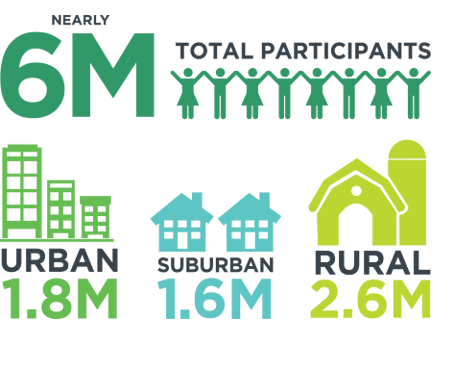Wait, you don't live on a farm? Dispelling myths about 4-H
Many know that 4-H develops youth through the handling and showing of livestock. Fewer know that 4-H is also an opportunity to explore STEM programs, woodworking, environmental conservation, as well as foods and nutrition among a whole host of other options.
Here is an attempt to dispel some of the myths surrounding this youth development program that has been around — and still is — more than 100 years after it was first organized.
Myth: 4-H is a dying program.

Truth: 4-H is the nation’s largest youth development organization, empowering 6 million young people throughout the United States. With an additional network of 540,000 volunteers, 3,500 professionals, and more than 25 million alumni, 4-H helps shape youths to move our country and the world in unique and effective ways.
Myth: 4-H is only for elementary-aged youths.
Truth: The age of 4-H members in Kansas ranges from 7 to 18. Youth must turn 7 years old before the first of the calendar year to enroll, with many participating all the way through the summer following high school graduation. Youth are also eligible to participate in County Council. Many clubs offer Cloverbud activities that focus on introducing youth ages 5 to 7 to various areas of 4-H.
Myth: 4-H doesn’t have much to offer older youths.
Truth: Youths looking for opportunities to learn leadership, teach their peers as well as younger youths, or who are searching for a way to attend college will want to take a closer look at 4-H. Many 4-H teens have used their “portfolios” for attending national leadership conferences and yes, even earning scholarships to attend college.
Myth: You have to work with animals to be a part of 4-H.
Truth: While horsemanship and livestock projects are alive and well in the 4-H program, there are more than 100 4-H “projects” in areas of science and technology, citizenship and leadership, healthy living and nutrition, and mentoring.
Myth: 4-H is only for kids who live on farms.
Truth: Through America’s 110 land-grant universities and its Cooperative Extension System, 4-H reaches every corner of our nation from urban neighborhoods to suburban schoolyards to rural farming communities.

Myth: 4-H is just a series of fun activities.
Truth: 4-H is very deliberate in helping youths incorporate the four leaves of the 4-H clover. The Hs stand for Head, Heart, Hands, and Health and represent the four values members work on through fun and engaging programs.
The values for each leaf include:
- Head — Managing and Thinking
- Heart — Relating and Caring
- Hands — Giving and Working
- Health — Being and Living
Further, 4-H programs strive to incorporate the essential elements of 4-H youth development which include helping youths experience a sense of belonging, providing experiences that help youths gain skills to work independently, creating opportunities for youths to help others and serve their community by practicing generosity, and, finally, taking steps in 4-H project work to accomplish mastery in the chosen project area. Such essential elements prepare youths to become caring and contributing members of society and may lead to future careers.
Want to learn more?
If you are new to 4-H, learn how to join as a member or become a volunteer. All the information you need to get started may be found at https://www.johnson.k-state.edu/4-h/.
Sources:
Utah State University Extension : https://www.thespectrum.com/story/life/2015/02/24/dispelling-myths/23964347/
Extension Winnebago County: University of Wisconsin-Madison https://winnebago.extension.wisc.edu/4h/join/myths/